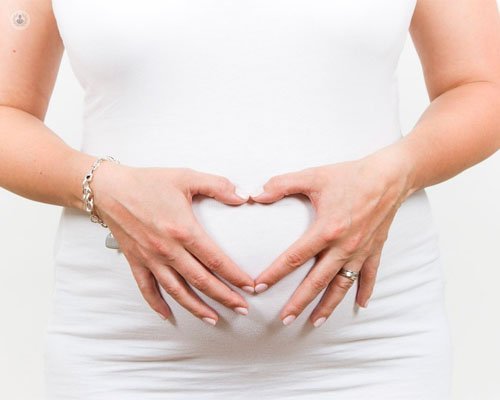Types of twin pregnancy and how to control
Written by:The twin pregnancy is a frequent incidence, representing in Spain few of the pregnancies. The cause of a twin pregnancy may be natural, that is, there is fertilization of more than one oocyte in the same cycle, or cause of yatrogenic, caused by intervention of the doctor. The natural cause is not predictable, except in older women, where the possibility of a twin pregnancy is greater than in younger women, as they more often produce double ovulations. This is because older women have a hormone (FSH) that is an inducer of ovulation, in higher concentrations.
However, twin pregnancies produced due to iatrogenic causes are more frequent, stimulating ovaries to achieve gestations, in the context of establishing a fertility-aid treatment and the impossibility of provoking a single ovulation, as in polycystic ovarian syndrome .
In vitro fecundations have significantly reduced the incidence of twin pregnancies, since the number of embryos transferred can be controlled, and the trend of single embryo transfer is increasing.
Importance of twin pregnancies
The importance of twin pregnancies is due to the fact that they are high-risk pregnancies , due to possible complications for fetuses, for the mother and for newborns. Fetal complications are mainly due to the higher incidence of malformations, especially in cases where fetuses share a pouch and placenta, which we call monoamniotic monoamniotic pregnancies. However, the problems of intrauterine growth retardation are more frequent due to the limitation of the human uterus to feed more than one fetus, producing low birth weight infants who will need more perinatal care. Another cause of low birth weight is prematurity , when contractions start prematurely , mainly because of the volume of the uterus, which can not dilate beyond a limit and trigger preterm delivery.
How to control twin pregnancies
Twin pregnancies should be controlled in high-quality centers equipped with fetal disturbance detection and fetal development systems, in particular with high-definition ultrasound devices, Doppler vascularization systems, under the supervision of obstetricians and specialists in Gynecology and Obstetrics prepared for that. They require a greater number of visits, to control not only the fetuses, but also the mother in terms of weight gain, which should be very well monitored, blood pressure figures or signs of poor outcome (edema , proteinuria, etc.).
One concept that is not always clear is whether the twins come from a single oocyte. Bicyclic twins appear when two eggs are fertilized by a spermatozoid each. Two amniotic sacs are then formed separately, two chorions and two placentas. The placentas in the bicyclic twins can be fused if the implantation sites are close to each other. Also, fused placentas can be easily separated after birth. These are brothers who have coincided in space and time.
The development of monozygotic twins , on the other hand, occurs when a fertilized egg divides into two during the first two weeks after conception. These twins are also called identical. If the division of the fertilized egg occurs within the first two to three days after fertilization, the twins will produce a separate amniotic sac and a chorion from the other. These twins have different placentas that can be separated or fused. Approximately one-third of the monozygotic twins have bicenteric and biamniotic placentas . 
If the division of the ovum occurs between three and eight days after fertilization, it translates into twins with monocorial and biamniotic placentation, because the chorion has already been formed but not the amniotic cavity. Approximately more than half of monozygotic twins are monochorial and biamniotic. If the division occurs even afterwards, that is to say, during day nine or thirteen after fertilization, the placentation is usually monocorial and monoamniotic. Monocorial and monoamniotic twins are uncommon and only 1% of monozygotic twins have this type of placentation. These monochorionic and monoamniotic twins have a common placenta with vascular communications between the two circulations. These two twins can develop twin-to-twin transfusion syndrome, which is very dangerous to the final viability of gestation.


